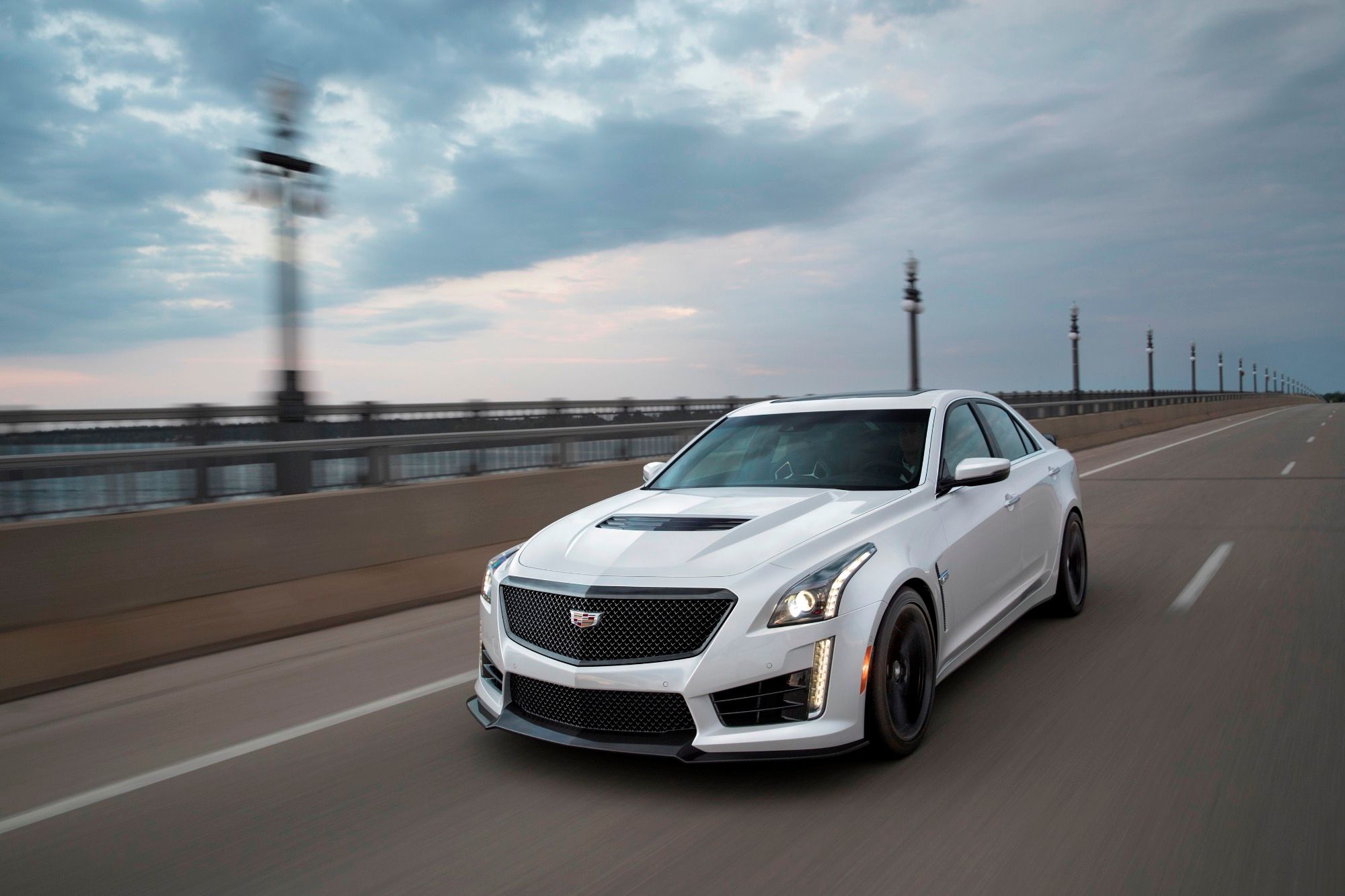
Cadillac's V Series models first arrived in 2004 with the introduction of the original CTS-V. Positioned as a rival for BMW's M cars and Mercedes-AMG, the V brand didn't skyrocket in popularity until the second-generation CTS-V arrived in 2008 as a 2009 model. Sadly, just as the Cadillac CTS-V reached its highest performance levels ever, it was discontinued and replaced by the Cadillac CT5-V, which has taken the V brand in a totally new (and less exciting) direction.
There is a hotter CT5-V with a manual transmission on the way, but while we wait for it, why not revisit the car that turned the V brand into a phenomenon? The second-generation CTS-V is now a tremendous bargain that is worth your attention.
Why You Should Buy One
The second-generation CTS-V is easily the most commonly admired V model and one of the best cars Cadillac has ever built in its illustrious history. While the first-generation CTS-V was manual-only and the third-generation model was automatic-only, the second-generation gave buyers a choice of transmissions. Available first as a sedan and later as a coupe or wagon, it was also the first (and only) CTS-V to give buyers a choice of multiple body styles.
Cadillac had found its styling groove by the time the CTS-V came around. It features a bold, squared-off design language mixed with gobs of flashy chrome including a chain-mesh grille. Think of the CTS-V as a muscle car wearing a fancy suit.
The Price
Here's where things get tricky with the CTS-V because prices range drastically depending on what you're looking for. If you're willing to take a used CTS-V sedan with an automatic transmission, early examples with higher mileage can now be found starting for less than $25,000. The Coupe model didn't arrive until the 2011 model year but prices seem to be relatively close to the sedan. Opting for either body style with a manual transmission drives up the price considerably.
The wagon body style is by far the rarest and most valuable of the three. Most of the examples we found are well over $35,000 with an automatic transmission. Finding a wagon with a manual transmission is a real challenge but if you can find one for less than $50,000, we'd say you should pull the trigger on it.
The Performance
The CTS may have begun its life as a V6 luxury car but the V models received a muscle car's V8. All second-generation CTS-V models are powered by a 6.2-liter supercharged V8 called the LSA, which shares a lot in common with the LS9 engine used in the C6 Corvette ZR1. In the CTS-V, this engine produces a whopping 556 horsepower and 551 lb-ft of torque sent to the rear wheels via a six-speed automatic or six-speed manual transmission.
With so much power on tap, you'd expect the CTS-V to be pretty fast. The automatic models could hit 60 mph in around 3.9 seconds while the manual cars were a tad slower at 4.1 seconds. Both cars could run the quarter-mile in around 12 seconds. The CTS-V was often heralded as one of the best-performance luxury cars of its era and even compared to today's sports sedans, it's still pretty lively.
The Interior
When you step inside the second-generation CTS-V, it should be clear that you are sitting in a car that was designed by General Motors in the mid-2000s. It wasn't exactly class-leading when it was new and by today's standards, the cabin will feel dated. There are plenty of cheap plastic surfaces and lots of flashy chrome but it is far from GM's worst interior effort at the time. V models all came with leather seats with 14-way Recaro chairs available as an option.
The Practicality
Since there are three different CTS-V models, the level of practicality differs depending on which one you choose. The CTS-V Coupe is the least practical of the bunch, with the most cramped back seat and a cargo capacity of just 10.5 cubic feet. The CTS-V Sedan also features just 10.5 cubic feet of trunk space but with two additional doors and better outward visibility, it is a bit more practical than the coupe. If you want the most practical CTS-V, the wagon offers a spacious 25.4 cubic feet of space behind the second row, which opens to 58 cubic feet with the rear seats down.
All three body styles were pretty thirsty, as you'd expect from a supercharged V8 car. Fuel economy ratings were around 14/19/16 mpg city/highway/combined for the manual or around 12/18/14 mpg city/highway/combined with the automatic.
Verdict
If you like the thought of owning a Camaro ZL1, Mustang Shelby GT500, or Dodge Hellcat but don't want to draw so much attention, the Cadillac CTS-V is the perfect car for you. It offers a similar level of performance you'd find in a high-dollar muscle car but wrapped in a more luxurious, stealthy body. Prices are now at an attainable level while manual wagons are actually appreciating in value. The Cadillac V brand might face an uncertain future but now is a great time to buy its ultimate model.
